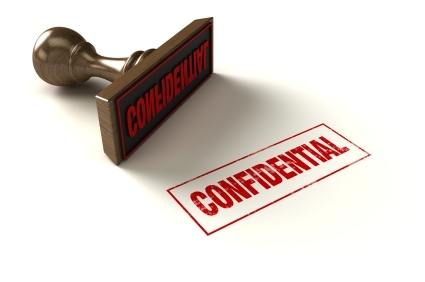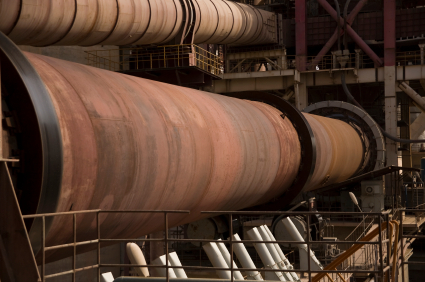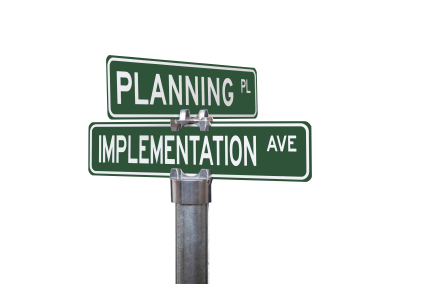ALL4’s: Is That Your Final Answer?
Last Month’s Answer and Winner:
There were several people who remembered their 4th grade math lesson on the distributive property because we received multiple correct answers for the August “Is That Your Final Answer” quiz. As you may recall, we needed to know the length that would be required to be added to a steel band tightly wrapped around the 24,900 mile circumference of the earth such that the additional length would allow the tallest ALL4 employee to walk under the band anywhere along the band. By using the distributive property, one can very easily calculate that increasing the length of the band by only approximately 40 feet would allow Tom Saylor (officially the tallest ALL4 employee) to walk under the band. The first respondent with the correct answer was Mr. Ron Gore of the Alabama Department of Environmental Management. However, as a public servant, Ron is committed to maintaining impartiality and thus he requested that he be excused from the competition thereby elevating Mr. Philip Antici of FutureFuel Chemical Company as the official August winner. Thanks to everyone who submitted the correct answer (there were no wrong answers received). 4th grade math teachers everywhere must be proud.
Question: 
It is only September 2011, but already the presidential election process seems to be capturing more and more attention. So why should the September “Is That Your Final Answer” question be any different? Since 1970 there have been 12 individuals who have served as senate-confirmed U.S. EPA administrators. Of these 12, only two individuals, William Ruckelshaus and Russell Train, have served under more than one president. Name the presidents that Ruckelshaus served under or the presidents that Train served under. As a hint, all of the presidents were Republicans and this is a tricky question.
Answer:
Please e-mail your answer to final.answer@all4inc.com. Include in the e-mail your name, answer, and address (to receive your prize).
The final answer feature of 4 The Record is designed to test your knowledge across the environmental field, quiz you on the building blocks of air quality rules, stump you on ALL4 general trivia, and challenge you with brain teasers that have perplexed us. The first correct answer e-mailed to us will qualify the respondent for free ALL4 gear and will enter the winner in our end-of-the year “Final Answer Championship.” The subsequent month’s 4 The Record will identify the winner and the correct answer from the previous month’s question. You must be an active subscriber of 4 The Record to win a monthly prize and be eligible for the championship prize. ALL4 employees and family members are not eligible to compete. Hope you enjoy this feature and good luck!
ALL4’s Employee Spotlight: Bob Kuklentz
Each quarter ALL4 will interview one of it’s employees highlighting some of their careers and thoughts about ALL4. This months employee spotlight is on Project Manager Bob Kuklentz.
What did you do before you joined ALL4?
When I graduated from college I got a job as a plant environmental manager for a chemical specialties manufacturer. I had plant responsibilities for environmental, health, and safety. At the time, many of the company’s products contained chemicals that were being phased out due to their ozone depleting potential. I was heavily involved in the transition to alternate chemicals, including educating customers on the product changes forced by the elimination of many of the solvents that had served industry for many years. It was an interesting time. After about three years I accepted a corporate environmental position at a multi-site paperboard packaging company. Over the years I had environmental responsibilities for up to 10 facilities in the U.S. and Canada. During my tenure the company transitioned from solvent- based printing to water-based printing, and greatly reduced emissions. I worked there for 17 years working my way to corporate environmental manager.
What one piece of advice would you give to college students looking for a position in the consulting business?
Specifically with regards to consulting I would tell college students to be ready to learn. In consulting, there are so many different project opportunities. The more things a person can put in their toolbox the more valuable they become. I would also tell them to be ready for a fast pace. There are never dull days!
What are your roles at ALL4?
My primary role at ALL4 is as a Project Manager. I manage projects for a wide range of clients. This includes managing staff, budget, communicating with the client, and ensuring top quality deliverables. I also serve as the technical staff coordinator for the Kimberton office. In this role I have the opportunity to coach our technical staff, with the goal to help them grow in their job roles here at ALL4. It is a fun, challenging, and rewarding role that adds variety to my day to day activities.
What do you like best about your career?
I vividly remember that while in 11th grade I decided that I wanted a career in the environmental field. Of course, at the time I am not sure I knew what that meant, but I knew I had an interest in the environment. So, here I am. Having spent 20 years in industry, the switch to consulting has been a refreshing change. I really enjoy the variety, the fast pace, and the opportunity to learn new things every day.
What do you not like about your career here?
I have no complaints.
What was your biggest challenge in your first year?
There were so many challenges I could never list them all. Adjusting to being “billable,” gaining new clients, and gaining the trust of my co-workers are a few that come to mind.
What was your biggest surprise since joining ALL4?
The biggest surprise is how well everyone works together, how much everyone helps each other, and how dedicated everyone is to making ALL4 great.
Why did you decide to join ALL4?
I felt that after 20 years in industry it was time for something new. I was lucky to find this opportunity. I can’t say it was an easy decision, as change is always hard, but I’ve never looked back.
Who is the best dresser at ALL4?
I am the wrong person to ask this question as I consider myself to be completely incompetent when it comes to fashion. It would be hard to say who has the nicest shorts and flip-flops here.
Give me an example of an event, system, person, or that best represents the ALL4 culture, and why.
There are so many examples I could give. For me, the biggest example is the benefits. ALL4 provides their employees with unrivaled benefits. But the true culture shows in the day to day operations. Everyone at ALL4 helps each other, and that makes for a great work environment.
What makes you great?
I don’t think I am great. I try to come to work every day, work hard, and go home to my family. I happen to be lucky enough to be riding on a pretty good wave here at ALL4, and I don’t take that for granted.
What is the most unique thing about working here?
Without a doubt it is the people. It is fun to work at a place where everyone is pointed in the same direction. Everyone here looks out for each other, and that has the company on a great track for growth and success.
As a big Phillies fan, give me your 4-man pitching rotation for the playoffs, 1-4 and a prediction on the playoffs.
Halladay, Lee, Hamels, and Worley…yes, Worley. How can you argue with the year the Vancelator is having? The guy just wins. Phils versus Brewers will be a fun NLCS. But, it all comes down to pitching, and no team can touch our pitching. I’d love a rematch against the Yankees, but I think it will be Phils versus Red Sox. Oh…and did I mention that John Mayberry Jr. should be playing left field?
GHG Reporting – Confidential Business Information
Now that you are busy entering your data for the 2010 Greenhouse Gas (GHG) Emissions Inventory Report into U.S. EPA’s Electronic Greenhouse Gas Reporting Tool (e-GGRT), you may become puzzled because e-GGRT is requiring you to enter information that you believe is confidential business information (CBI) and you understood that reporting of that information had been deferred by U.S. EPA. You’re not alone. When it comes to e-GGRT and CBI, it is easy to get confused. Here’s why.
In recent months U.S. EPA took several different actions related to CBI and how it is treated for submitting data under the requirements of 40 CFR Part 98 (the GHG Reporting Rule). In two (2) separate rules published on December 27, 2010 and August 25, 2011, U.S. EPA deferred the reporting deadline for data elements that are used by reporters as inputs to GHG emission calculation equations under the GHG Reporting Rule. The deadline for reporting some of these data elements is now deferred to March 31, 2013 and the deadline for reporting others is deferred to March 31, 2015. Examples of these deferred data elements include the quantity and types of fuels combusted and the quantities and types of process material throughputs that are used to calculate GHG emissions. e-GGRT has been designed to reflect the reporting deferral rules and does not currently collect the inputs to emission equations that are deferred.
So that’s clear. But if you are reporting GHG emissions from a production process, e-GGRT may be requiring you to enter data on the types and quantities of products you produced from each emission unit at your facility during the reporting period. So you ask, “Isn’t that information CBI too?” The short answer is that it could be.
In another rule published on May 26, 2011, U.S. EPA issued its determinations of which data submitted in e-GGRT (other than inputs to equations) will be treated as CBI and which data elements can be released to the public. This final rule made CBI determinations for data categories such as “production throughput data that are not inputs to emission equations” and “unit/process operating characteristics that are not inputs to emission equations.” For data reported in e-GGRT that is determined to be CBI
Proposed Ozone NAAQS Withdrawn
At the request of President Obama, U.S. EPA has withdrawn the draft ozone National Ambient Air Quality Standards (NAAQS). The current 8-hour ozone NAAQS is 75 parts per billion (ppb). U.S. EPA had been close to finalizing a revised ozone NAAQS at a level between 60 and 70 ppb prior to withdrawing the draft proposal. In the withdrawal request, the President cited concerns about the regulatory burden on industry and about the timeline for the next ozone NAAQS reconsideration, which is scheduled to begin in 2013. The withdrawal is the second time in the past several months that a proposed NAAQS level has remained unchanged. U.S. EPA proposed earlier in the year to maintain the current NAAQS levels for carbon monoxide (CO). The withdrawal of the draft ozone NAAQS eliminates 
U.S. EPA National Enforcement Initiatives for Fiscal Years 2011 – 2013
While U.S. EPA has certainly been focusing a large portion of its emissions reduction regulatory development and compliance enforcement efforts on the usual suspects (i.e., fossil fuel-fired energy production and use sectors such as coal-fired utilities, cement manufacturing, glass production, and large industrial boilers), they have now added energy extraction initiatives to the “list.” The energy extraction initiatives include coal mining and gas extraction (including Marcellus Shale gas). The following three (3) initiatives are some of U.S. EPA’s top initiatives out of a short list of six (6) top initiatives for fiscal years 2011 – 2013:
- Reducing Widespread Air Pollution from the Largest Stationary Sources, especially the Coal-Fired Utility, Cement Manufacturing, Glass Manufacturing, and Acid Production Sectors.
- Reducing Pollution from Mineral Processing Operations.
-
Assuring Energy Extraction Sector Operations’ Compliance with Environmental Laws.
The intensity of regulatory development and compliance with those requirements is going to be a significant challenge for both the industrial sector trying to survive in today’s economy, and for the state environmental agencies whose staffing is stretched thin also because of budgetary issues.
Cement Sector Relief Act of 2011
On July 28, 2011, H.R. 2681 (Cement Sector Relief Act of 2011) was introduced in the House of Representatives for consideration. If passed, the bill would direct the Administrator of U.S. EPA to issue new rules to replace the following three (3) interrelated rules that affect the Portland Cement industry:
- National Emission Standards for Hazardous Air Pollutants (NESHAP) from the Portland Cement Manufacturing Industry (Portland Cement MACT).
- Standards of Performance for New Stationary Sources and Emission Guidelines for Existing Sources: Commercial and Industrial Solid Waste Incineration Units (CISWI).
-
Identification of Non-Hazardous Secondary Materials (NHSM) That are Solid Waste.
While addressing a number of issues, the bill specifically provides that in defining the terms “commercial and industrial solid waste incineration unit,” “commercial and industrial waste,” and “contained gaseous material,” the Administrator should adopt the meaning of those terms set forth in the rule entitled “Standards for Performance of New Stationary Sources and Emission Guidelines for Existing Sources: Commercial and Industrial Solid Waste Incineration Units,” published at 65 Fed. Reg. 75338 (December 1, 2000). These definitions provide that units designed for energy recovery should be regulated under Section 112 of the Clean Air Act (CAA), rather than be classified as incinerators and regulated under CAA Section 129.
The bill is intended to ensure the continued use of a wide range of non-hazardous secondary materials as fuels and raw materials, and to encourage energy recovery from the use of non-hazardous secondary materials as fuels. The bill also clarifies that 
The bill was referred to the House Committee on Energy and Commerce where it was to begin mark-up during the week of September 19, 2011. At this time, it is unclear if or when this bill will be up for vote in the House of Representatives.




